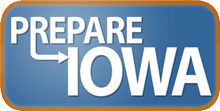


Don't Panic: Principles of Crisis and Risk Communication Scenario [1]
This interactive scenario, developed by UMPERLC, provides training in the principles of crisis and risk communication during a response for a public health emergency. This scenario is intended for health practitioners who wish to improve their ability to effectively communicate with the public, media, health care providers, and response community during a public health emergency. Estimated time to complete is one hour.
Crisis and Emergency Risk Communication for Health Educators - Part A: Recognizing Reactions [2]
Crisis and Emergency Risk Communication for Health Educators, Part B: Understanding Your Role as a Health Educator [3]
Crisis and Emergency Risk Communication for Health Educators - Part C: Communicating the Message [4]
This series of short courses, from the Harvard PERLC, are designed to present the participant with information on risk communication during emergency situations with a particular emphasis on how an health educator can play an integral role in effectively communicating health messages or preventive measures during a crisis, and what challenges she/he may face. Learning objectives focus on ‘using principles of crisis and risk communication,’ which is competency 2.2 under Communicate and Manage Information. Total time to complete all three courses is one hour.
HSEEP Template for Discussion of Capability 6: Information Sharing [5]
A template for assessing the sharing of information among stakeholders in an exercise involving Public Health Preparedness and Hospital Preparedness.
CDC’s Public Health Information Network [6]
CDC.gov is CDC's primary online communication channel. Annually, there are close to 500 million page views to the site, averaging 41 million page views per month.
Public Health Mutual Aid Agreements [7]
This FAQ document, from Cambridge Advanced Practice Center and revised by the San Francisco Bay Area Advanced Practice Center, explains public health mutual aid agreements and scenarios for their use.
Mutual Aid Agreement Template [8]
A template for drafting mutual aid agreements from the Cambridge Advanced Practice Center.
The Iowa Statewide Interoperable Communications System Board (ISICSB) [9]
ISICSB develops, implements, and oversees policy, operations and fiscal components of communication interoperability efforts at the state and local level. The board hosts a series of 1-day workshops to expand its program.
Planning and Implementing a Public Health Exercise for Radiological Events: An Exercise Guide [10]
This exercise guide is a rich resource tool utilizing tools previously developed by the Tarrant County APC to provide guidance on performing a public health-focused radiological exercise. The document distills key information from a variety of authoritative sources, to be used as a process guide for local health departments to perform one of the most critical but often neglected aspects of public health readiness: the operations-based or test exercise for an incident involving radioactive agents such as a radioactive dispersion device or so-called “dirty bomb.” The guide contains numerous links to planning and training resources from the Centers for Disease Control and Prevention, the US Department of Homeland Security, and Department of Energy websites. The CD also contains a 17 minute video overview of a major field functional exercise performed in November 2004 involving a simulated dirty bomb at a major NASCAR facility, the Texas Motor Speedway. This CD should be used as a didactic piece along with the DVD, “Designing, Implementing, and Evaluating a Public Health Exercise – A Dirty Bomb Disaster.” The CD covers additional operational considerations in performing a radiological exercise.
Links
[1] http://go.prepareiowa.com/url/km
[2] http://go.prepareiowa.com/url/kn
[3] http://go.prepareiowa.com/url/ko
[4] http://go.prepareiowa.com/url/kp
[5] http://www.kdhe-exercises.org/HSEEP_Templates/EEG_Library_for_Discussion_Based_Exercises/PH-6_InfoSharing_DiscussionBased.doc
[6] http://www.cdc.gov/phin/
[7] http://apc.naccho.org/Products/APC2007768/Pages/Overview.aspx
[8] http://www.cambridgepublichealth.org/services/emergency-preparedness/products/Mutual_Aid_Template.pdf
[9] http://isicsb.iowa.gov/
[10] http://apc.naccho.org/Products/APC20071160/Pages/Overview.aspx